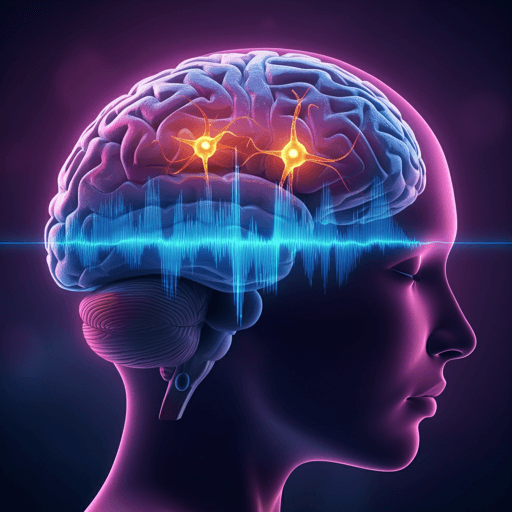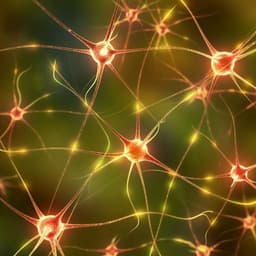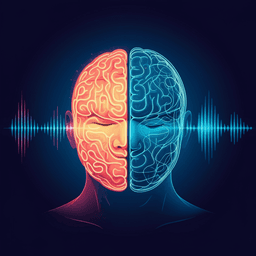
Biology
Transient reactivation of small ensembles of adult-born neurons during REM sleep supports memory consolidation in mice
S. Srinivasan, I. Koyanagi, et al.
REM sleep reactivation of as few as ~3 adult-born dentate gyrus neurons, precisely synchronized to a specific theta phase, is causally necessary for fear memory consolidation — direct evidence that consolidation depends on minimal neuronal ensembles and theta-timed coordination. This research was conducted by Authors present in <Authors> tag.
~3 min • Beginner • English
Introduction
During REM sleep, hippocampal neuronal ensemble activity related to prior experiences is replayed and aligned to specific theta phases. Theta oscillations during REM are necessary for contextual fear memory consolidation and are prominent in the dentate gyrus (DG), whose granule neurons include a subset generated in adulthood. Adult-born neurons (ABNs) active during learning can reactivate during subsequent REM sleep, and prior work showed that silencing the overall ABN population in REM impairs consolidation. However, whether reactivation of specific ABN ensembles, and their precise coordination with theta phase during REM, causally supports memory consolidation remained unknown. This study tests the causal role of small, context-specific ABN ensembles and their theta phase synchrony during REM in consolidating fear memories.
Literature Review
Prior studies established that hippocampal replay during REM aligns to theta phases and that REM theta is required for contextual memory consolidation. DG exhibits strong theta during REM, and its neurons, including ABNs, phase-lock to theta and encode fear memories. Silencing overall ABN activity during REM impairs consolidation, and ABNs are implicated in novelty processing, synaptic plasticity, and participation in memory engrams. However, causal links between the reactivation of identified memory-encoding ensembles and behavior were lacking, as was evidence for the necessity of precise theta phase timing of ABN activity in REM. This work builds on these findings by tagging and manipulating sparse, learning-activated ABN ensembles and by using closed-loop phase-specific silencing to test theta-phase-dependent contributions to consolidation.
Methodology
- Animals and genetic tools: Triple-transgenic mice (pNestin-CreERT2/cfos-tTA/TRE-LSL-GCaMP6s) to express GCaMP6s in differentiated ABNs four weeks after tamoxifen (TMX) induction; developmentally born granule neurons (GNs) labeled using AAV-CaMKII-Cre in cfos/TRE-LSL-GCaMP6s mice. For ensemble tagging and silencing, nestin/cfos/TRE-LSL-Jaws-GFP (nestin/cfos/jaws) mice were generated to express Jaws in cfos-activated ABNs under doxycycline (Dox) control. For theta phase-specific silencing, nestin/pCAG-LSL-eNpHR3.0-YFP (nestin/halo) mice were used.
- Calcium imaging: One-photon microendoscopic Ca2+ imaging from DG in freely moving mice across habituation to context A (6 sessions over 3 days), pre-shock, post-shock, and subsequent REM sleep episodes within a 2.5 h consolidation window. Neurons were tracked across sessions with CaliAli; deconvolution used FOOPSI/CNMF-E. Average neuronal activity modeled via mixed linear models incorporating time, shock, and REM factors; population vector (PV) correlations computed across session pairs and modeled with linear components for time, shock, and REM.
- Behavioral paradigms: Contextual fear conditioning in context A (four 2-s, 0.75 mA shocks within 10 min) with a retrieval test next day. For theta-phase experiments, trace fear conditioning (five tone–trace (18 s)–shock (1.0 mA) trials) followed by context and tone (trace) tests.
- Optogenetic tagging/silencing: During Dox-Off, context exposures (A or C) tagged sparse ABN ensembles via cfos-tTA driving Jaws-GFP; Dox-On prevented further tagging. Orange light (589 nm) delivered bilaterally to DG. For retrieval tests, light was pulsed during testing; for consolidation experiments, light was delivered selectively during REM sleep detected by EEG/EMG. Sensitivity and precision of REM-targeted light averaged ~0.83 and ~0.82, respectively.
- Closed-loop theta phase-specific silencing: A custom device detected local field potential (LFP) theta peaks/troughs in DG and delivered 25 ms orange light pulses unilaterally at one of four target phases per cycle during REM sleep in the consolidation window. A yoked control mouse received the same light timing not locked to any neural phase/state.
- Electrophysiology: Patch-clamp in acute slices confirmed temporally precise, reversible suppression of Jaws-expressing ABNs by 589 nm light, without effects in non-Jaws cells.
- Histology: Verified age and localization of tagged ABNs (subgranular zone), counted Jaws-GFP+ cells within light-effective DG volume; mean 2.4±3.2 tagged ABNs per mouse in the effective area.
- Statistics: Mixed linear models with permutation tests for Ca2+ activity and PV correlations; two-tailed t-tests for two-group comparisons; one-way ANOVA with Dunnett’s post hoc vs yoked controls for multi-group theta-phase experiments; ridge regression to estimate freezing effect size vs theta phase stimulation distribution.
Key Findings
- Sparse reactivation signature: ABN ensembles exhibited greater temporal stability and stronger PV correlations between conditioning context sessions and REM sleep than GNs, indicating preferential reactivation of learning-related ABN ensembles during REM.
- Average activity dynamics: Both ABNs and GNs showed decreased activity with time, after shock, and during REM, with no overall difference in mean activity across sessions between cell types.
- Small ensemble size: Tagging during context exposure yielded very sparse ABN ensembles within the light-effective region (mean 2.4±3.2 neurons), demonstrating that as few as ~3 ABNs can be sufficient to impact consolidation.
- Retrieval unaffected by ensemble silencing: Silencing tagged ABN ensembles during wake retrieval did not impair contextual memory (two-tailed paired t-tests: Test 1 vs Test 2 light on/off, p=0.21; in a variant design, p=0.056), suggesting reactivation of the tagged encoding ensemble is not necessary for recall despite the importance of overall ABN population activity reported previously.
- REM-specific consolidation requirement for context-matched ensembles: Silencing context A-tagged ABNs exclusively during REM sleep in the consolidation window impaired contextual fear memory compared to cfos- controls (unpaired t-test: p=0.002). Silencing ABNs tagged in an unrelated context C during REM had no effect (p=0.69), demonstrating context specificity.
- Cell age/type specificity: Silencing reactivation of mature (~10-week-old) ABN ensembles during REM did not impair memory (p=0.38); silencing developmentally born GN ensembles also had no effect (p=0.77). Thus, young ABN ensembles uniquely support consolidation.
- Theta phase dependence: Closed-loop silencing of young ABNs during REM at a specific theta phase impaired both contextual and trace fear memory only when delivered at Phase 1 (ascending phase). One-way ANOVA with Dunnett’s vs yoked control: context test p=0.042; trace test p=0.013; Phases 2–4 showed no impairment. Sleep architecture and REM theta properties were unchanged by stimulation.
Collectively, findings provide causal evidence that REM sleep consolidation depends on reactivation of minimal, context-relevant young ABN ensembles and their precise synchronization to a specific theta phase.
Discussion
The study directly links reactivation of identified, context-specific young ABN ensembles during REM to successful fear memory consolidation. By showing that silencing these sparse ensembles during REM—but not during wake retrieval—impairs memory, the work dissociates roles of ensemble-specific reactivation in consolidation from general ABN contributions to retrieval reported elsewhere. Context specificity and the lack of effect when silencing ensembles tagged in a different context indicate that the reactivated content must match the learned association. The absence of deficits when manipulating mature ABNs or developmentally born GNs highlights a unique temporal window in ABN maturation critical for consolidation. Phase-specific interference during the ascending phase of DG theta selectively disrupted both contextual and hippocampus-dependent trace fear memory, supporting a mechanistic role for theta phase-timed ABN spiking in driving synaptic plasticity and downstream circuit engagement (e.g., DG–CA3). Together, these results substantiate a model in which minimal ABN ensembles reactivate within precise theta-defined temporal windows during REM to consolidate associative memories.
Conclusion
This work demonstrates that reactivation of very small, context-specific ensembles of young adult-born dentate granule neurons during REM sleep is necessary for fear memory consolidation, and that consolidation critically depends on precise synchronization of ABN activity to the ascending phase of local theta oscillations. The findings causally connect ensemble-specific reactivation and theta-phase timing to behavioral memory outcomes, delineating a unique contribution of young ABNs not shared by mature ABNs or developmentally born GNs. Future research should map the circuit-level consequences of phase-specific ABN activity (e.g., DG–CA3–CA1 dynamics), test generalization to other memory domains and species, identify molecular plasticity mechanisms engaged by theta-timed reactivation, and refine closed-loop interventions to enhance or rescue memory consolidation.
Limitations
- Potential labeling bias: Ensemble tagging relied on cfos promoter activation, which could bias toward highly active or particular neuronal subsets; authors argue stability and functional relevance mitigate this concern.
- Sparse/variable tagging: Some mice exhibited no detectable Jaws-GFP+ cells and within-group variability in behavioral effects, likely due to technical or biological variability in cfos-driven expression and sparse activation.
- Individual-level correlations: Technical limitations precluded reliable mouse-by-mouse correlation of tagged cell counts with behavioral outcomes; mitigated by increased sample sizes, replication with rigorous blinding, and multiple controls.
- Specificity to task/species: Findings are in mice using contextual and trace fear paradigms; generalizability to other memories, brain regions, or humans remains to be determined.
- Temporal window: Conclusions pertain to young (~4-week-old) ABNs; contributions of other maturation stages or network states may differ.
Related Publications
Explore these studies to deepen your understanding of the subject.







